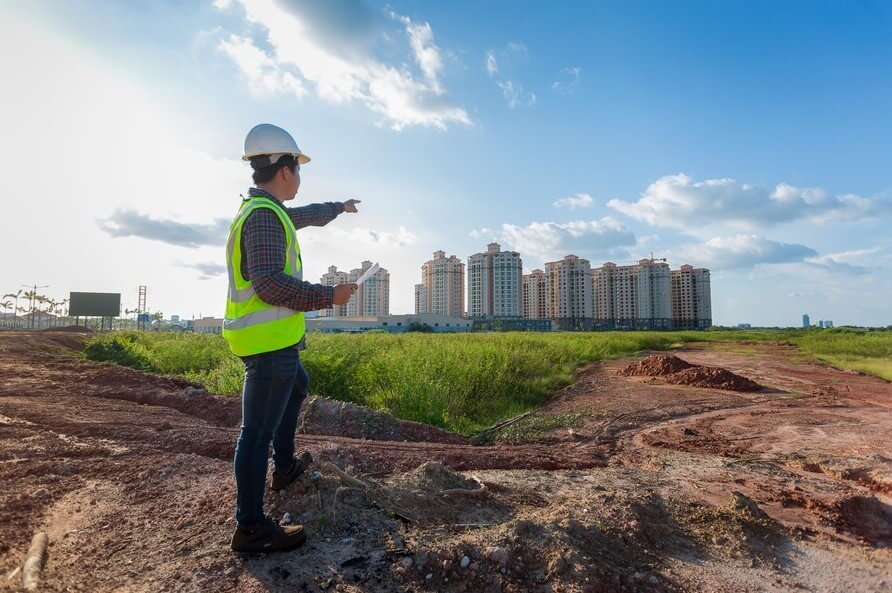A thorough earthwork estimating is necessary for all growth projects to ensure proper planning and execution. How measures are set for building projects has changed thanks to online tools and methods that keep improving. We will talk about earthwork estimating. It will examine the pros and cons of online estimation tools, the importance of getting exact costs, and how well looking at soil and assessing prices for specific task lines works.
Determining how much digging, reviewing, and other earthmoving tasks will cost regarding materials, labor, and tools is part of earthwork estimating. It is vital to have correct estimations to plan, organize, and keep building projects on track.
Importance of Accurate Estimates
- Budgeting: To make budgets that can be met, you need to make accurate guesses about how much work needs to be done on the ground. Building projects often have to stick to tight budgets. Costs stay within budget when reports are correct.
- Setting up a project: A good project setting starts with reliable reviews. They help choose the tools, set goals, and decide when things need to be done.
- Getting rid of risk: Accurate estimations help find potential risks and issues with the project immediately while also thinking about innovative ways to reduce gambling.
How To Look At Different Techniques For Earthwork Estimating?
There are three main ways for architects and managers to look at 3D data for building projects’ foundations. These ways allow you to know how much dirt and other materials you need for the building site.
End-Area Method
The average method is what we use for small jobs where we need to find the numbers at all grid points. It is the best way to do it, so we can use it when cutting or filling something. You will get the wrong estimates if you use the standard method for jobs that need to be cut and served.
The Block Method
Our team uses the block method, commonly known as the division of square method, to calculate medium-sized project balances. The block strategy is easier to understand than the part strategy. It is also more accurate than the standard strategy. Using the block method for jobs that need filling and cutting will give you some safety cushion, but less than when you use the common method.
Cross-Area Method
The segment method is one of the most complex and accurate ways to find an earthwork scale. We use this method for big projects like dams, train tracks, and streets. But the part method is the best way to get a correct reading that will save you money.
Earthmoving Project Estimates Online
To keep up with the times, Digital Estimating has switched to using online platforms. There are many good things about online stages, like the fact that they are open and let people work together all the time. Anywhere with an internet connection, contractors and project managers can now get quotes for jobs that move dirt.
- Digital Takeoff Software: Digital exit devices use exact estimates from project plans to cut down on the mistakes that happen when people use old-fashioned ways to leave.
- A Look at Stages on the Web: Many websites let people get prices from a lot of different companies for groundwork. Users can put in information about their projects and get quotes.
- Cloud-Based Collaboration: Cloud-based tools make it easy for everyone working on a project to do their part.
Most of the time, these online tools have complicated calculations and sets of data that look at things like the type of soil, the size of the job, and the cost of the tools. We know for sure that the tests we give are correct and useful. Online earthwork estimating services help contractors work faster and make better decisions.
Precise Earthwork Cost Estimation
How well the cost of earthwork is estimated is a key part of any construction job. When estimations are wrong, they can cause changes to the financial plan, delays, and fights between partners. It is more accurate to do the evaluation when you use cutting-edge tools. These tools include Building Information Modelling (BIM) and Geographic Information Systems (GIS).
BIM lets you make a three-dimensional model of the project site. It shows the entire region and provides digging estimates. GIS, on the other hand, puts together geological data that helps us figure out how the project will generally change the temperature. Earthwork evaluators can make more accurate predictions by combining these new technologies. It makes it less likely that unexpected costs will come up during the building phase.
Online Excavation Estimates
Lots of construction projects need to find things, and finding out how much they will cost is a big part of planning the project. There are online uncovering programs that make it easy to figure out how much it will cost to dig. These calculators consider dig depth, dirt type, and tools.
The earthwork estimating tools make uncovering scales more accurate based on the needs of each job. This information-based strategy is more accurate and considers quick modifications if the configuration changes or something unexpected happens. That way, project managers can make smart choices about how much to dig, which will help the whole construction project move forward.
Efficient Soil Grading Cost Analysis In Earthwork Estimating
Before building, it’s important to grade the ground, and when making a budget, it’s important to use exact costs. You need to know the soil type, tools, and time and work required to make a good cost analysis of reviewing soil.
- Site Inspection: An in-depth site study is needed to find out about the dirt, the amount of trash that needs to be thrown away, and the cost of the review.
- Technology Integration: When technologies like GPS and geographic planning are used together, they make soil testing more accurate.
- Environmental Considerations: For a full-cost study of reviewing soil, it is important to look at environmental factors like how to stop it from disintegrating.
When it comes to figuring out how much dirt costs, online tools make it easier. Most of the time, these gadgets remember sets of data that describe different types of soil and how they act. Adding job details, like the grading area, improves cost estimates. This speed saves time, speeds up dirt reviews, and clarifies prices.
Accurate Land Grading Project Quotes
Reviewing a building site before construction is necessary. It is also important to give clear job titles to get contracts and stay on budget for the project. Online earthwork estimating tools help hired workers to generate land estimation project statements quickly and accurately.
When these machines do their review, they think about things like the slope level and the tools that the system needs. Web-based platforms let people looking for work give customers accurate and thorough job descriptions. It helps people trust that the services they offer are honest and reliable.
Conclusion
Online tools and other cutting-edge technologies have made it a lot easier for earthwork estimating. This simple part of planning a construction project shows how important accuracy and skill are. Tools like professional soil evaluation cost estimations and online finding scores help developers make better choices, lower the risk of going over budget, and make projects more successful overall. More new technology in the building industry will likely make earthwork estimating more precise and faster.


